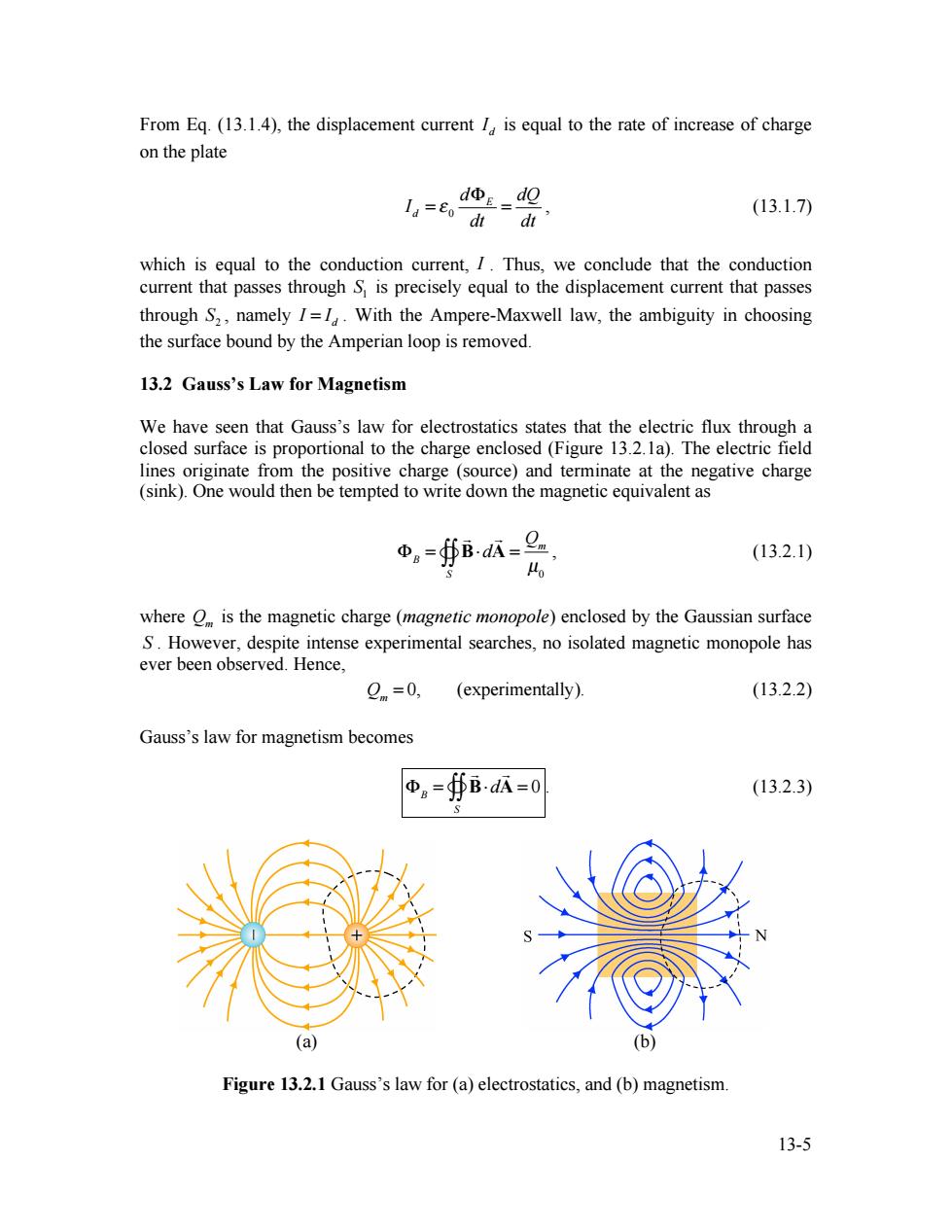正在加载图片...

From Eq.(13.1.4),the displacement current I,is equal to the rate of increase of charge on the plate ,dΦE=d Ia=8o di di' (13.1.7) which is equal to the conduction current,I.Thus,we conclude that the conduction current that passes through S is precisely equal to the displacement current that passes through S2,namely I=1.With the Ampere-Maxwell law,the ambiguity in choosing the surface bound by the Amperian loop is removed. 13.2 Gauss's Law for Magnetism We have seen that Gauss's law for electrostatics states that the electric flux through a closed surface is proportional to the charge enclosed(Figure 13.2.1a).The electric field lines originate from the positive charge (source)and terminate at the negative charge (sink).One would then be tempted to write down the magnetic equivalent as Φ。=BadA= (13.2.1) where O is the magnetic charge (magnetic monopole)enclosed by the Gaussian surface S.However,despite intense experimental searches,no isolated magnetic monopole has ever been observed.Hence, Qm=0, (experimentally). (13.2.2) Gauss's law for magnetism becomes 中。=∯BdA=0 (13.2.3) (a) Figure 13.2.1 Gauss's law for (a)electrostatics,and (b)magnetism 13-513-5 From Eq. (13.1.4), the displacement current d I is equal to the rate of increase of charge on the plate 0 E d d dQ I dt dt ! " = = , (13.1.7) which is equal to the conduction current, I . Thus, we conclude that the conduction current that passes through 1 S is precisely equal to the displacement current that passes through 2 S , namely d I = I . With the Ampere-Maxwell law, the ambiguity in choosing the surface bound by the Amperian loop is removed. 13.2 Gauss’s Law for Magnetism We have seen that Gauss’s law for electrostatics states that the electric flux through a closed surface is proportional to the charge enclosed (Figure 13.2.1a). The electric field lines originate from the positive charge (source) and terminate at the negative charge (sink). One would then be tempted to write down the magnetic equivalent as !B = ! B"d ! A S "## = Qm µ0 , (13.2.1) where Qm is the magnetic charge (magnetic monopole) enclosed by the Gaussian surface S . However, despite intense experimental searches, no isolated magnetic monopole has ever been observed. Hence, Qm = 0, (experimentally). (13.2.2) Gauss’s law for magnetism becomes !B = ! B"d ! A S "## = 0 . (13.2.3) (a) (b) Figure 13.2.1 Gauss’s law for (a) electrostatics, and (b) magnetism